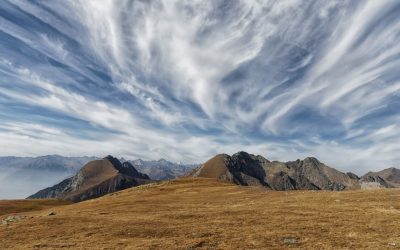Explore the World Through Geography, Natural Resources & Daily History
Clear, reliable and engaging guides that help you understand our planet — from UK geography education to global natural resources and On This Day history events.
Explore, discover, and learn about the wonders of our world! At Earth Site, we’re passionate about bringing geography, history, and science to life for curious minds of all ages. Whether you’re delving into historical events, uncovering the mysteries of the natural world, or seeking interactive resources, you’re in the right place.
Here, you can uncover the stories behind historical events, explore the natural wonders of our planet, and gain valuable insights into how the Earth’s systems shape our daily lives. From the towering peaks of mountain ranges to the far-reaching impacts of human innovation, we aim to make every topic both engaging and informative.
Start your journey of discovery with us today, and let’s make learning an adventure!
What We Cover
Earth Site brings together engaging and accessible educational content designed to help you understand the world, its history, and its natural systems.
🌍 Geography Education (UK & Worldwide)
We publish clear, easy-to-understand geography resources for students, teachers and curious learners. Our guides support geography education in the UK and cover physical geography, climate, ecosystems, population, and global development.
⛏️ Natural Resources & Environmental Geography
Explore detailed country profiles covering natural resources, mining, energy, geology and global environmental challenges. We show how nations manage minerals, water, land and ecosystems, and why these resources matter.
📅 On This Day in History
Every day has a story. Our On This Day history series features major events, anniversaries, traditions, and cultural milestones from around the world — with timelines, context, and fun facts.
TIMELINE
History of Taiwan
The history of Taiwan is deeply intertwined with its indigenous peoples, who have inhabited the island for thousands of years. Archaeological evidence suggests that the earliest settlers arrived around 6,000 years ago, likely migrating from Southeast Asia. These indigenous groups, often referred to collectively as the Austronesian peoples, developed distinct cultures and languages, with over a dozen recognised tribes, including the Amis, Atayal, and Paiwan. Each tribe possessed its own unique customs, social structures, and spiritual beliefs, which were closely linked to the natural environment. The indigenous peoples of Taiwan were primarily hunter-gatherers and subsistence farmers, relying on the island’s rich biodiversity for their livelihoods. The arrival of external influences began in the 16th century when European explorers first set foot on the island. However, prior to this, the indigenous communities had established complex societies with rich oral traditions and a deep connection to their land. Their understanding of agriculture, particularly in cultivating rice and millet, laid the groundwork for sustainable living on the island. The indigenous peoples’ relationship with their environment was not merely utilitarian; it was also spiritual. Many tribes believed in animism, attributing spiritual significance to natural elements such as mountains, rivers, and forests. This profound connection to the land would later be challenged by waves of colonisation and migration. Summary Early settlement in the region was inhabited by indigenous peoples with rich cultural traditions and diverse societies. Dutch and Spanish colonization brought about significant changes in governance, trade, and cultural influences in the region. Qing Dynasty rule saw the integration of the region into the Chinese empire, impacting local governance and cultural practices. Japanese occupation...
Climate Zones of Taiwan: Different climate regions Of Taiwan
Taiwan, an island nation located off the southeastern coast of China, is renowned for its diverse climate zones, which are influenced by its geographical features and topography. The island’s climate is shaped by the interaction of the East China Sea and the Pacific Ocean, as well as the presence of the Central Mountain Range that runs from north to south. This unique combination results in a variety of microclimates across the island, making Taiwan a fascinating case study for climatologists and a desirable destination for tourists seeking different weather experiences. The climate of Taiwan can be broadly categorised into several distinct zones: tropical, subtropical, temperate, alpine, coastal, and monsoon. Each of these zones exhibits unique characteristics that influence not only the natural environment but also the lifestyle and culture of the inhabitants. Understanding these climate zones is essential for anyone looking to explore Taiwan, as it affects everything from agricultural practices to tourism activities. The following sections will delve into each climate zone, highlighting their specific features and implications for both residents and visitors. Summary Taiwan has a diverse range of climate zones, including tropical, subtropical, temperate, alpine, coastal, and monsoon. The tropical climate zone in Taiwan is characterized by high temperatures and heavy rainfall, making it important for travellers to pack accordingly. The subtropical climate zone experiences milder temperatures and less rainfall, making it a popular destination for travellers seeking a more temperate climate. The temperate climate zone offers cooler temperatures and distinct seasons, making it an ideal destination for travellers looking for a change in scenery. The alpine, coastal, and monsoon climate zones each offer unique weather...
Terrain and Topography of Taiwan: mountains, valleys, and plains.
Taiwan, an island nation located off the southeastern coast of China, is renowned for its diverse and dramatic terrain. Spanning approximately 36,000 square kilometres, the island is characterised by a striking juxtaposition of rugged mountains, fertile plains, and picturesque valleys. This unique topography has not only shaped the natural beauty of Taiwan but has also played a significant role in its cultural and economic development. The island’s geographical features are a result of complex geological processes, including tectonic activity and volcanic formations, which have created a landscape that is both breathtaking and varied. The central mountain range, which runs from north to south, is the backbone of Taiwan’s topography. This range is home to some of the highest peaks in East Asia, including Yushan (Jade Mountain), which rises to an impressive 3,952 metres. The mountains are flanked by lush valleys and rolling hills that descend towards the western plains, where the majority of Taiwan’s population resides. The interplay between these different landforms creates a rich tapestry of ecosystems, each with its own unique flora and fauna. Understanding Taiwan’s terrain is essential for appreciating its natural heritage and the challenges it faces in terms of conservation and sustainable development. Summary Taiwan’s terrain and topography are diverse, ranging from majestic mountains to lush plains and scenic valleys. The mountains of Taiwan, including Yushan, are some of the highest in East Asia and offer stunning natural beauty. The valleys of Taiwan, such as the Taroko Gorge, provide breathtaking landscapes and opportunities for outdoor activities. The plains of Taiwan are fertile and support a variety of agricultural activities, contributing to the economy. Taiwan’s...
Natural Resources of Taiwan: Where Natural Resources are Located in Taiwan
Taiwan, an island nation located off the southeastern coast of China, is renowned for its rich and diverse natural resources. The geographical positioning of Taiwan, coupled with its unique climatic conditions, has endowed the island with a variety of resources that are crucial for its economy and sustainability. From mineral deposits to fertile agricultural land, Taiwan’s natural resources play a pivotal role in supporting its population and driving economic growth. The interplay between these resources and the island’s development has shaped its history and continues to influence its future. The significance of Taiwan’s natural resources extends beyond mere economic value; they are integral to the cultural identity and lifestyle of its inhabitants. The lush landscapes, mountainous terrains, and coastal regions not only provide essential materials but also contribute to the island’s biodiversity. This intricate relationship between the environment and human activity underscores the importance of understanding and managing these resources effectively. As Taiwan faces challenges such as urbanisation, industrialisation, and climate change, the sustainable management of its natural resources has become increasingly critical. Summary Taiwan is rich in natural resources, including minerals, agricultural land, forestry, water, and energy sources. The geological and topographical features of Taiwan contribute to its diverse range of natural resources. Taiwan has significant mineral resources, including coal, gold, and limestone, which contribute to its economy. The agricultural resources in Taiwan are diverse, with a focus on rice, fruits, and vegetables, making it a key player in the global food market. Taiwan’s forestry and timber resources are carefully managed to ensure sustainable use and conservation of the environment. Geological and Topographical Features of Taiwan Geological Structure...
Cultural or Historical Sites of Taiwan: Important Cultural Landmarks or Historical Sites In Taiwan
Taiwan, an island nation nestled in East Asia, boasts a rich tapestry of cultural and historical sites that reflect its diverse heritage and complex history. The island’s strategic location has made it a crossroads of various civilisations, resulting in a unique blend of indigenous, Chinese, Japanese, and Western influences. This confluence is vividly illustrated in its architecture, traditions, and festivals, making Taiwan a fascinating destination for those interested in exploring its past and present. From ancient temples to colonial forts, each site tells a story that contributes to the broader narrative of Taiwan’s identity. The significance of these cultural and historical sites extends beyond mere tourism; they serve as vital links to Taiwan’s past, offering insights into the lives of its people throughout the centuries. The preservation of these sites is crucial for understanding the island’s evolution, particularly in the context of its political history and social changes. As visitors traverse the landscapes dotted with temples, museums, and parks, they encounter not only the physical remnants of history but also the enduring spirit of a society that has navigated through various challenges while maintaining its unique cultural identity. Summary Taiwan is home to a rich tapestry of cultural and historical sites, each with its own unique story to tell. The National Palace Museum is a treasure trove of Chinese art and artifacts, showcasing over 700,000 pieces of ancient imperial collections. The Chiang Kai-shek Memorial Hall is a grand monument dedicated to the former President of the Republic of China, offering a glimpse into Taiwan’s modern history. Longshan Temple is a bustling and vibrant place of worship, known for its...
Population Density of Taiwan
Taiwan, an island nation located in East Asia, is renowned for its vibrant culture, advanced technology, and stunning landscapes. However, one of the most striking characteristics of Taiwan is its population density. With a land area of approximately 36,000 square kilometres and a population exceeding 23 million, Taiwan boasts one of the highest population densities in the world. This phenomenon has profound implications for various aspects of life on the island, from urban planning and infrastructure to social dynamics and environmental sustainability. Understanding the intricacies of Taiwan’s population density is essential for grasping the challenges and opportunities that arise in such a densely populated region. The high population density in Taiwan is not merely a statistic; it reflects a complex interplay of historical, geographical, and socio-economic factors. The island’s mountainous terrain limits the availability of habitable land, concentrating the population in urban areas. Cities like Taipei, Kaohsiung, and Taichung have become bustling metropolises, drawing people from rural areas in search of better employment opportunities and living standards. This migration has further exacerbated the density issue, leading to a myriad of challenges that require careful consideration and strategic planning. Summary Taiwan has one of the highest population densities in the world, with over 23 million people living in an area of approximately 36,000 square kilometers. Factors contributing to Taiwan’s high population density include limited land availability, urbanization, and high birth rates. Compared to other countries, Taiwan’s population density is higher than that of the United Kingdom and Japan, but lower than that of Singapore and Hong Kong. The high population density in Taiwan has put a strain on infrastructure and...
Taiwan
Taiwan (Chung-hua Min-kuo (Republic of China)) Capital: Taipei Population (Estimated July 2012): 23,113,901 Area: 36,191km2 or 13,973mi2 Currency: New Taiwan Dollar (NT$) Official Language: Mandarin Chinese Political Information: Multiparty Democracy Official Religion: No Official Religion(approximately 93% of the population are a mixture of Buddhist and Taoist, 4.5% are Christian and 2.5% have other religious beliefs) Highest Mountain: Yu Shan Mountain at 3,952m or 12,966ft GDP Official Exchange Rate (OER is more precise at gauging a country’s economic power) (Estimated 2011): $466.8 billion (US$) or (GBP) GDP (OER) Per Capita (per member of the population estimated in 2011): GDP Purchasing Power Parity (PPP is good for gauging living conditions and the use of resources but is not as accurate as OER. This data has been calculated based on the sum value of all goods and services produced in the country valued at prices prevailing in the United States) (Estimated 2011): $885.3 billion (US$) or (GBP) GDP (PPP) Per Capita (per member of the population estimated 2011): $38,200 (US$) or (GBP) Time Zone (GMT/UTC): +8:00 Wildlife: Counties/Provinces/States: 18 counties (hsien, singular and plural), 3 municipalities (shih, singular and plural), and 4 special municipalities (chih-hsia-shih, singular and plural) counties: Changhua, Chiayi (county), Hsinchu (county), Hualien, Kaohsiung (county), Kinmen, Lienchiang, Miaoli, Nantou, Penghu, Pingtung, Taichung, Tainan (county), Taipei (county), Taitung (county), Taoyuan, Yilan, Yunlin municipalities: Chiayi (city), Hsinchu (city), Keelung special municipalities: Kaohsiung (city), Taichung (city), Tainan (city), Taipei (city) Leaders: President Ma Ying-jeou; Premier Sean C. Chen Sources: CIA World Fact Book, Encyclopaedia Britannica. Taiwan Taiwan, an island nation located off the southeastern coast of China, is renowned for its diverse geography and varied climate. The island stretches approximately 394 kilometres...
Understanding the Political Boundaries of Suriname: Provinces, Districts, and Historical Divisions
Suriname, a small yet culturally rich nation located on the northeastern coast of South America, is bordered by the Atlantic Ocean to the north, French Guiana to the east, Brazil to the south, and Guyana to the west. Its political boundaries are not merely lines on a map; they represent a complex interplay of historical, cultural, and social factors that have shaped the nation’s identity. The country covers an area of approximately 163,820 square kilometres, making it one of the smallest countries in South America. Despite its size, Suriname boasts a diverse population and a wealth of natural resources, which have influenced its political landscape. The political boundaries of Suriname are delineated into several administrative divisions, including provinces and districts. These divisions play a crucial role in governance and local administration, impacting everything from resource allocation to representation in the national government. Understanding these boundaries is essential for grasping the dynamics of Suriname’s political system and the challenges it faces in terms of governance and development. The historical context of these boundaries, along with the influence of various communities within Suriname, adds layers of complexity to the nation’s political framework. Summary Suriname’s political boundaries are defined by its provinces and districts, which play a crucial role in its governance. The historical divisions, influenced by colonialism, continue to impact modern political boundaries in Suriname. Provinces and districts in Suriname have specific roles in governance, including resource management and local administration. Challenges and controversies surrounding Suriname’s political boundaries include issues of representation and resource allocation. The influence of colonialism on Suriname’s political divisions has shaped the country’s current political landscape and...
Exploring Suriname’s Natural Resources: Locations and Discoveries
Suriname, a small yet ecologically rich country located on the northeastern coast of South America, is endowed with a wealth of natural resources that play a pivotal role in its economy and cultural identity. The nation is characterised by its vast rainforests, extensive river systems, and mineral-rich landscapes, which have attracted both local and international interest for decades. Suriname‘s natural resources include bauxite, gold, timber, and a variety of agricultural products, all of which contribute significantly to the livelihoods of its inhabitants and the overall economic framework of the country. The abundance of these resources has not only shaped Suriname’s economic landscape but has also influenced its social and environmental dynamics. The extraction and utilisation of these resources often come with challenges, including environmental degradation and social displacement. However, there is a growing recognition of the need for sustainable practices that balance economic development with ecological preservation. This article delves into the various natural resources of Suriname, exploring their extraction processes, economic implications, and the ongoing efforts to ensure sustainability in their use. Summary Suriname is rich in natural resources, including bauxite, gold, timber, oil, and gas, making it an important player in the global market. Bauxite mining in Moengo has been a major economic driver for Suriname, with the country being one of the top 10 producers of bauxite in the world. Gold mining in Brokopondo has also contributed significantly to Suriname’s economy, but has raised concerns about environmental impact and sustainability. Timber logging in the Amazon Rainforest has been a contentious issue, with efforts to balance economic gain with conservation of the world’s largest rainforest. Eco-tourism in...
Climate Zones of Suriname: Exploring Suriname’s Varied Climates
Suriname, a small yet ecologically rich country located on the northeastern coast of South America, boasts a remarkable diversity of climate zones. This diversity is largely attributed to its geographical position, topography, and the influence of various climatic systems. The country is bordered by the Atlantic Ocean to the north, Brazil to the south, and French Guiana to the east, which collectively contribute to its unique weather patterns. Suriname‘s climate can be broadly categorised into several distinct zones, each characterised by its own temperature ranges, precipitation levels, and seasonal variations. Understanding these climate zones is essential for appreciating the rich biodiversity and cultural practices that thrive within this South American gem. The climate of Suriname is predominantly tropical, with high humidity and temperatures that typically hover around 27 to 30 degrees Celsius throughout the year. However, the interplay of different climatic influences creates a mosaic of microclimates across the country. From the lush tropical rainforests that dominate the interior to the drier savanna regions in the south, each zone supports a unique array of flora and fauna. This article delves into the various climate zones of Suriname, exploring their characteristics, implications for biodiversity, and the impact on human activities. Summary Suriname has a diverse range of climate zones, including tropical rainforest, savanna, tropical monsoon, subtropical, highland, and coastal climates. The tropical rainforest climate in Suriname is characterized by high temperatures, heavy rainfall, and lush vegetation, making it a biodiverse and ecologically rich region. The savanna climate in Suriname features a dry season and a wet season, with grasslands and scattered trees dominating the landscape. Suriname’s tropical monsoon climate experiences...
Exploring Suriname’s Cultural and Historical Sites
Suriname, a small yet vibrant nation located on the northeastern coast of South America, is a treasure trove of cultural and historical significance. With a rich tapestry woven from the threads of its indigenous peoples, colonial past, and diverse immigrant communities, Suriname offers a unique glimpse into the confluence of various cultures. The country’s historical sites are not merely remnants of the past; they are living narratives that reflect the struggles, triumphs, and everyday lives of its people. From the bustling streets of Paramaribo to the serene landscapes of its interior, each site tells a story that contributes to the national identity. The significance of these cultural and historical sites extends beyond mere tourism; they are vital for understanding Suriname’s complex history. The influences of indigenous tribes, European colonisers, African slaves, and Asian indentured labourers have all left indelible marks on the nation’s cultural landscape. As such, these sites serve as important educational resources, offering insights into the diverse heritage that shapes contemporary Surinamese society. Visitors to Suriname are not just observers; they become participants in a living history that continues to evolve. Summary Suriname is home to a rich cultural and historical heritage, with a unique blend of indigenous, colonial, and religious influences. The Historic Inner City of Paramaribo is a UNESCO World Heritage Site, showcasing the country’s colonial architecture and vibrant cultural scene. Visitors can immerse themselves in the indigenous cultures and traditions of Suriname, learning about the customs and beliefs of the country’s diverse ethnic groups. Exploring the plantation and slavery history of Suriname offers a sobering look at the country’s past, with opportunities to visit...
Exploring Suriname’s Diverse Terrain: Mountains, Valleys, and Plains
Suriname, a small yet captivating country located on the northeastern coast of South America, is renowned for its extraordinary and varied terrain. Spanning approximately 163,000 square kilometres, it is bordered by French Guiana to the south, Brazil to the southwest, and Guyana to the west. The nation is characterised by its rich tapestry of ecosystems, ranging from dense rainforests and majestic mountains to expansive savannahs and coastal plains. This diversity is not merely a geographical feature; it is a vital component of Suriname‘s identity, influencing its culture, economy, and the lives of its inhabitants. The country’s landscape is predominantly shaped by its tropical climate, which fosters an abundance of flora and fauna. Suriname’s terrain is a mosaic of natural wonders, including the Amazon rainforest, which covers a significant portion of the country. This lush environment is home to countless species of plants and animals, many of which are endemic to the region. The interplay between the various geographical features creates a unique ecological balance that supports both terrestrial and aquatic life. As one traverses the country, the dramatic shifts in scenery—from towering mountains to serene valleys—offer a glimpse into the intricate relationship between nature and the people who inhabit this remarkable land. Summary Suriname’s diverse terrain offers a range of landscapes, from mountains to valleys and plains. The Tumuc-Humac Mountains stand majestically, offering stunning views and challenging hikes. The lush valleys of Suriname are a sight to behold, with their vibrant greenery and diverse flora and fauna. The vast plains of the coastal region provide a different kind of beauty, with their open spaces and unique ecosystems. Voltzberg and...











